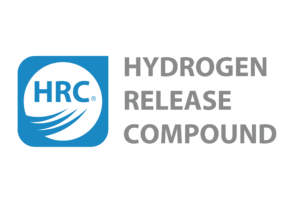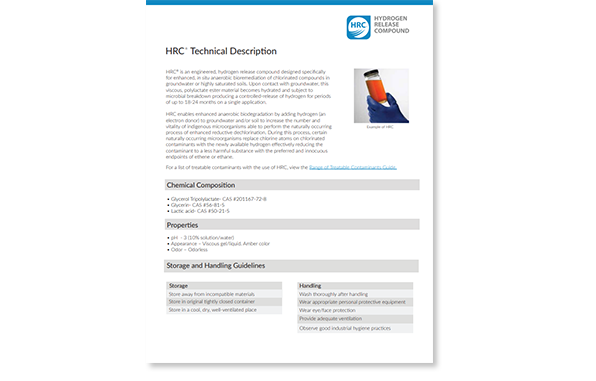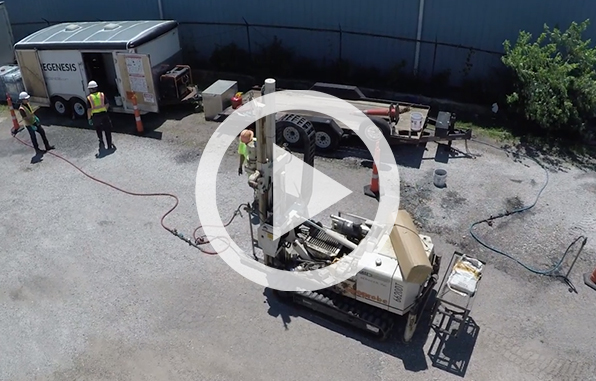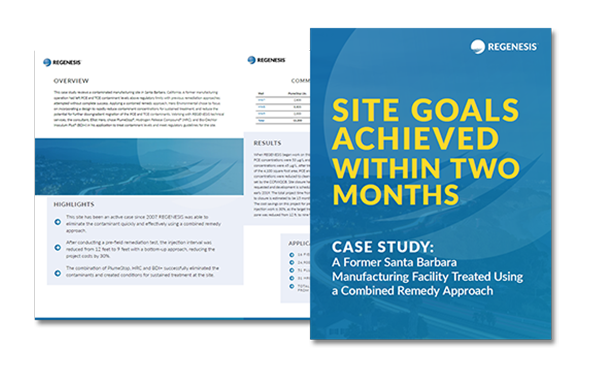



A Range of Electron Donors with Varying Release Profiles to Suit Project Specific Needs
- Provide controlled-release lactic acid to promote reducing conditions and optimize the anaerobic enhanced reductive dechlorination process
- A range of products, release profiles and applications to suit your project specific needs.
- Highly viscous to viscous versions stay in-place where injected for highly targeted treatment
- A viable, long-term source of staged-release hydrogen, on the order of 2-5 years from a single application
- Geochemistry and anaerobic bioremediation performance parameters are well understood and easily monitored
- Highly compatible with anaerobic bioaugmentation approaches using Bio-Dechlor INOCULUM PLUS
- Clean, low-cost, non-disruptive application (permanent wells, direct-push, excavations, etc.)
- No on-going operations and maintenance needed
- Faster and often lower cost than drawn out natural attenuation approaches
RESOURCES
Hydrogen Release Compound (HRC®)
Original Hydrogen Release Compound with Controlled-Release Electron Donor Technology and Positional Longevity
HRC is an engineered, hydrogen release compound designed specifically for enhanced, in situ anaerobic bioremediation of chlorinated compounds in groundwater or highly saturated soils. Upon contact with groundwater, this viscous, poly-lactate ester material becomes hydrated and subject to microbial breakdown producing a controlled-release of hydrogen for periods of up to 18-24 months on a single application. HRC enables enhanced anaerobic biodegradation by adding hydrogen (an electron donor) to groundwater and/or soil to increase the number and vitality of indigenous microorganisms able to perform the naturally occurring process of enhanced reductive dechlorination. During this process, certain naturally occurring microorganisms replace chlorine atoms on chlorinated contaminants with the newly available hydrogen effectively reducing the contaminant to a less harmful substance with the preferred and innocuous endpoints of ethane or ethane.
Extended Hydrogen Release Compound (HRC-X®)
An Extended-Release Version of HRC for Driving Desorption, Dissolution and Degradation of Higher Dissolved Phase Chlorinated Concentrations Including Residual DNAPL
HRC-X is a more robust and viscous version of Hydrogen Release Compound (HRC), it is designed to stimulate anaerobic biodegradation by providing an extended-release of electron donor material for periods of up to 5 years or more on a single application. With an additional 3+ years of hydrogen releasing capability when compared to standard HRC, HRC-X is suitable for treating sites with higher dissolved-phase concentrations (including residual DNAPL) where it can be effective in driving biological mechanisms such as desorption and dissolution. HRC-X may also be instrumental in treating sites where only a single remediation treatment application is possible and there is a need to maximize the treatment longevity.
Hydrogen Release Compound Primer (HRC Primer®)
A Faster-Releasing Version of HRC Designed for use in Rapidly Priming an Aquifer for Longer-Term 3-D Microemulsion, HRC or HRC-X Treatment
HRC Primer is a thinner, less viscous, hydrogen release compound that is injected into groundwater to stimulate anaerobic biodegradation by releasing lactic acid over a period of several weeks (rates faster than standard HRC). These rates are however slower and more controlled than those of simple sugar solutions or straight lactic acid which can be exhausted after several days. HRC Primer is typically recommended where high levels of competing electron acceptors (CEAs), primarily sulfate, exist and should be reduced to “prime” the anaerobic subsurface for a more successful, cost-effective 3-D Microemulsion, HRC or HRC-X application.
Target Contaminants:
- Chlorinated Solvents
- Tetrachloroethylene (PCE)
- Trichloroethene (TCE)
- cis-1,2 Dichloroethene (DCE)
- Vinyl chloride (VC)
- Tetrachloroethane
- Trichloroethane (TCA)
- Dichloroethane (DCA)
- Carbon tetrachloride
- Chloroethane
For a complete listing of treatable contaminants please visit our Range of Treatable Contaminants Page.
Typical Soil and Groundwater Remediation Application Methods:
- Permanent injection wells
- Direct-push injection (barriers and grids)
- Recirculating wells
- Soil borings
- Excavation applications into soil or on top of bedrock
- Gravity feed into bedrock wells
Next Steps:
If you currently have a project and need a remediation solution now, visit our Request a Design page.
Have questions or want to explore some ideas? Contact Us to get in touch with a local representative.
Are you planning a remediation project?
Contact Us to explore solutions and options.
FAQs about Hydrogen Release Compound (HRC®)
Hydrogen Release Compound is an engineered, hydrogen release compound designed specifically for enhanced, in situ anaerobic bioremediation of chlorinated compounds in groundwater or highly saturated soils. This compound produces a controlled-release of hydrogen for periods of up to 18-24 months on a single application.
Hydrogen Release Compound (HRC) works upon contact with groundwater. After contact, this viscous, poly-lactate ester material becomes hydrated and subject to microbial breakdown producing a controlled-release of hydrogen for periods of up to 18-24 months on a single application. HRC enables enhanced anaerobic biodegradation by adding hydrogen (an electron donor) to groundwater and/or soil to increase the number and vitality of indigenous microorganisms able to perform enhanced reductive dechlorination. During this process, microorganisms replace chlorine atoms on chlorinated contaminants with the newly available hydrogen reducing the contaminant to a less harmful substance with the endpoints of ethane or ethene.
Hydrogen Release Compound is right for your project if you are treating your contaminant with anaerobic biodegradation and you require a solution that is quicker than natural attenuation.

 Americas
Americas Europe
Europe Français
Français Deutsch
Deutsch Italiano
Italiano Español
Español





